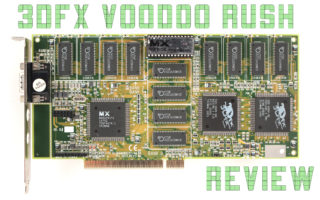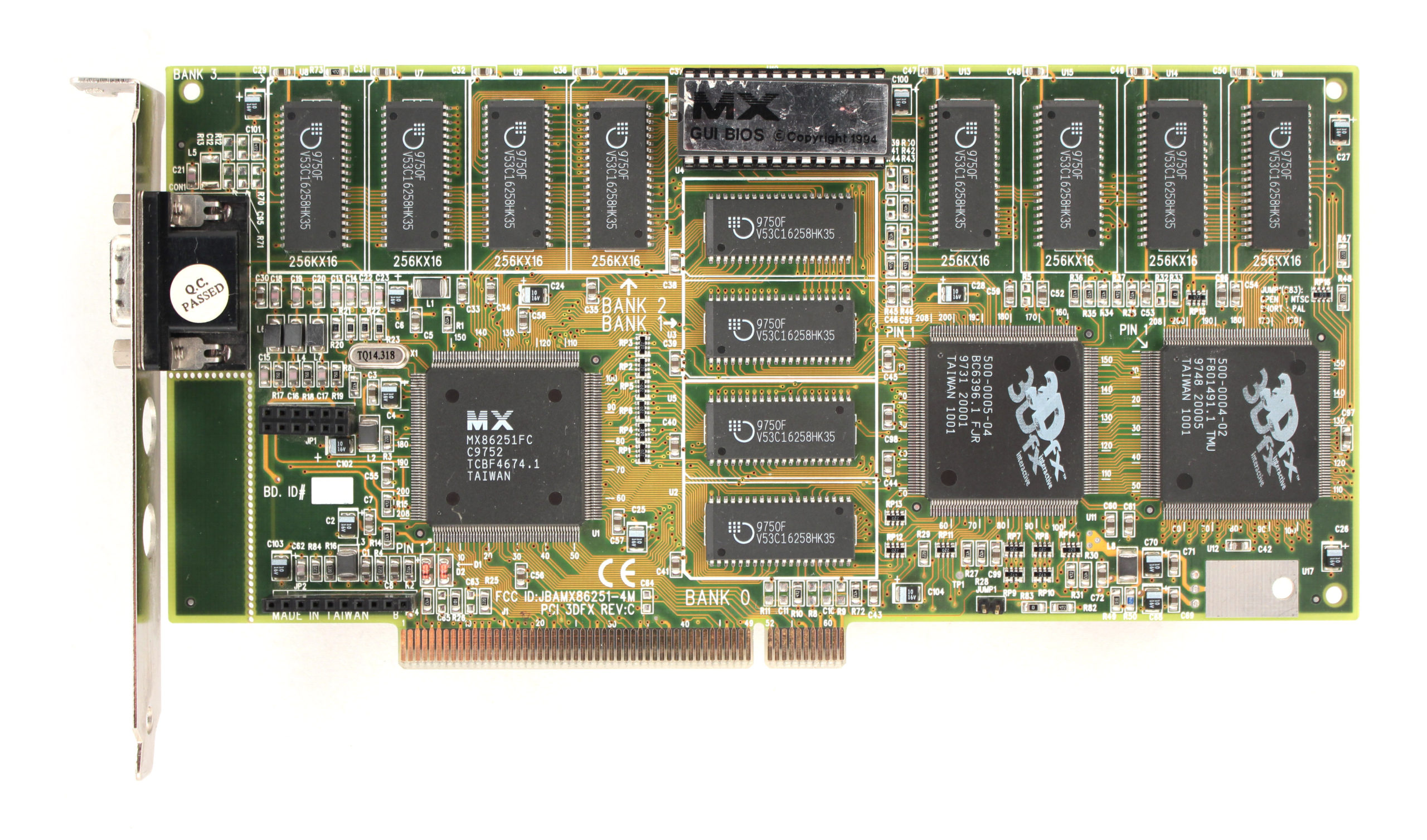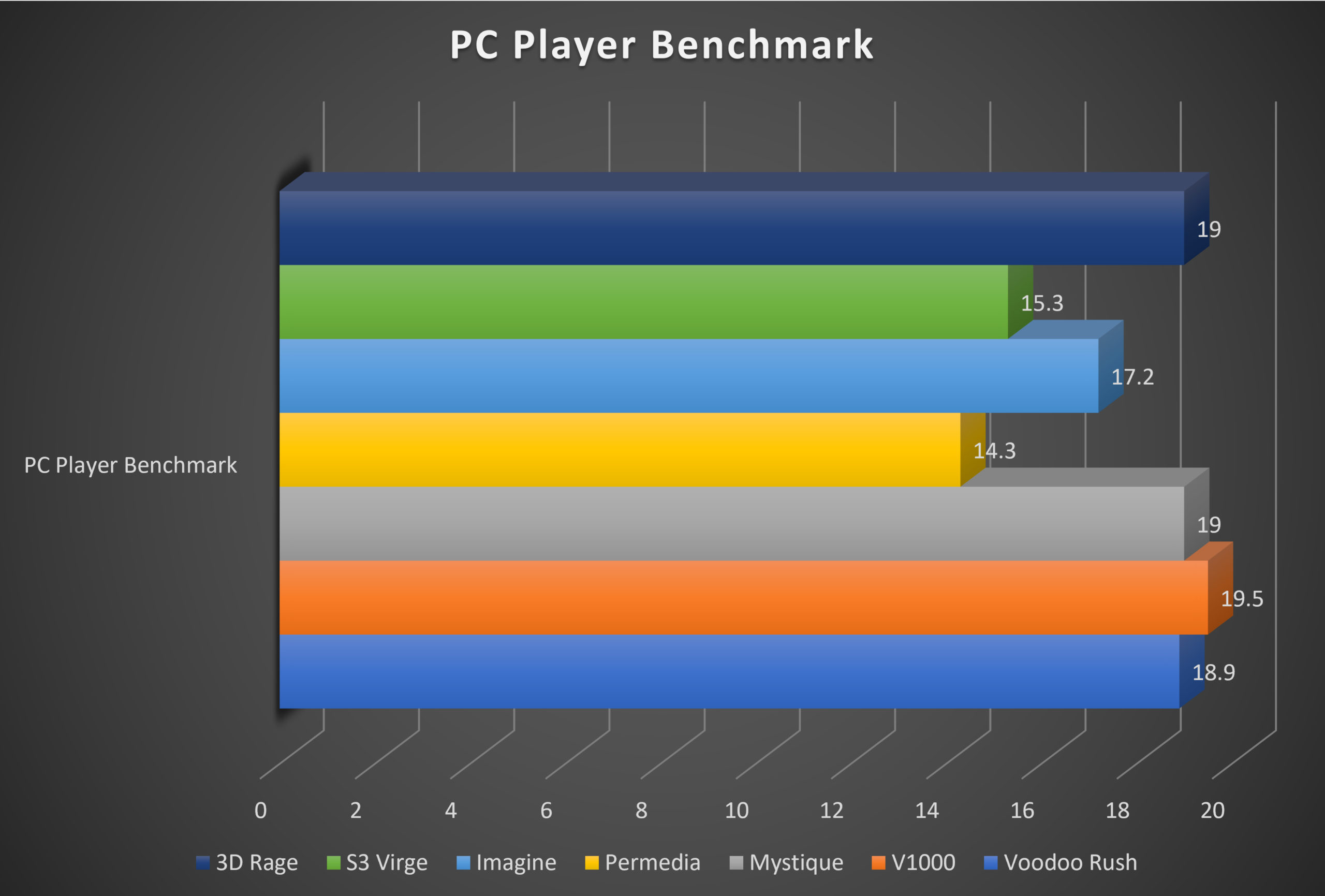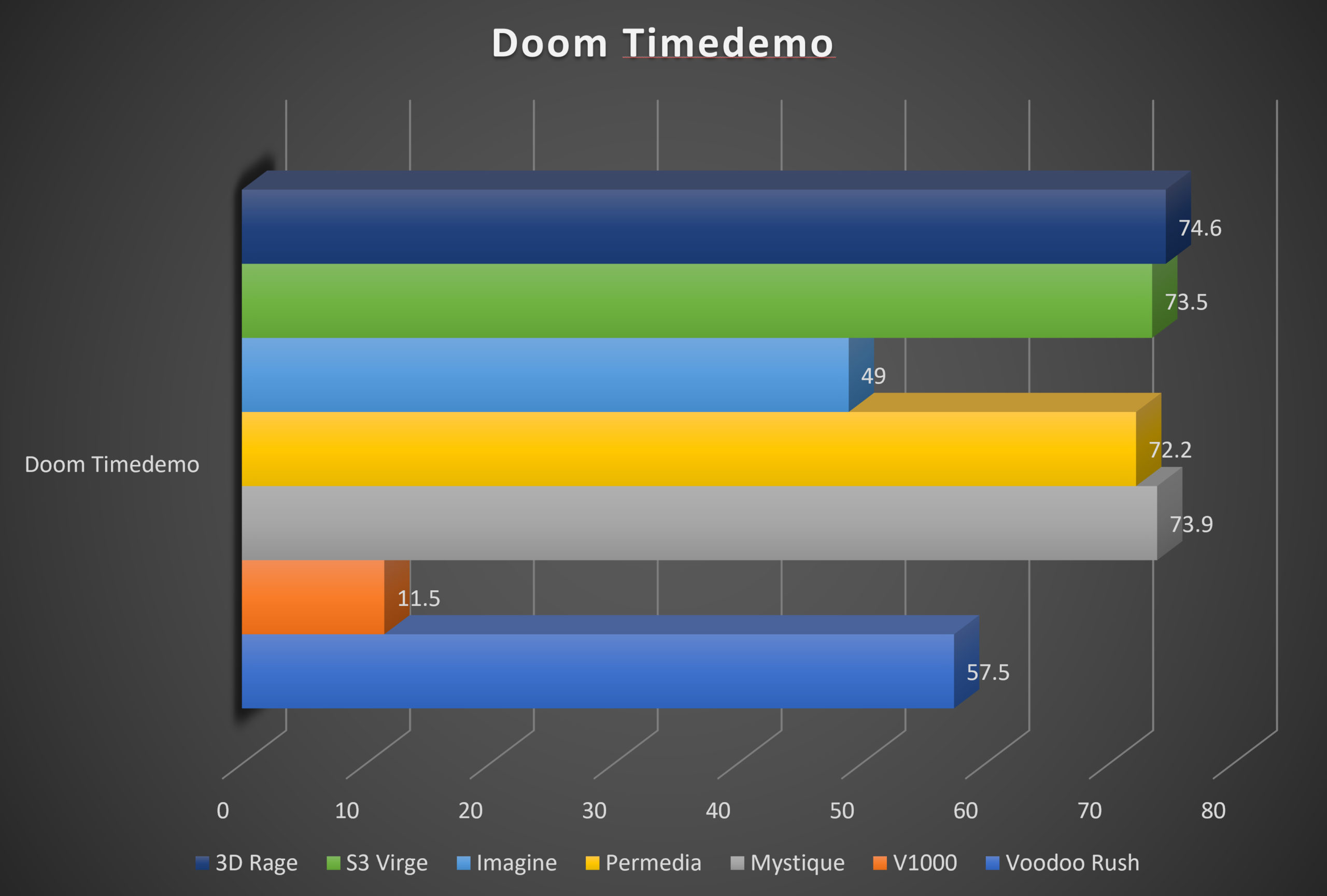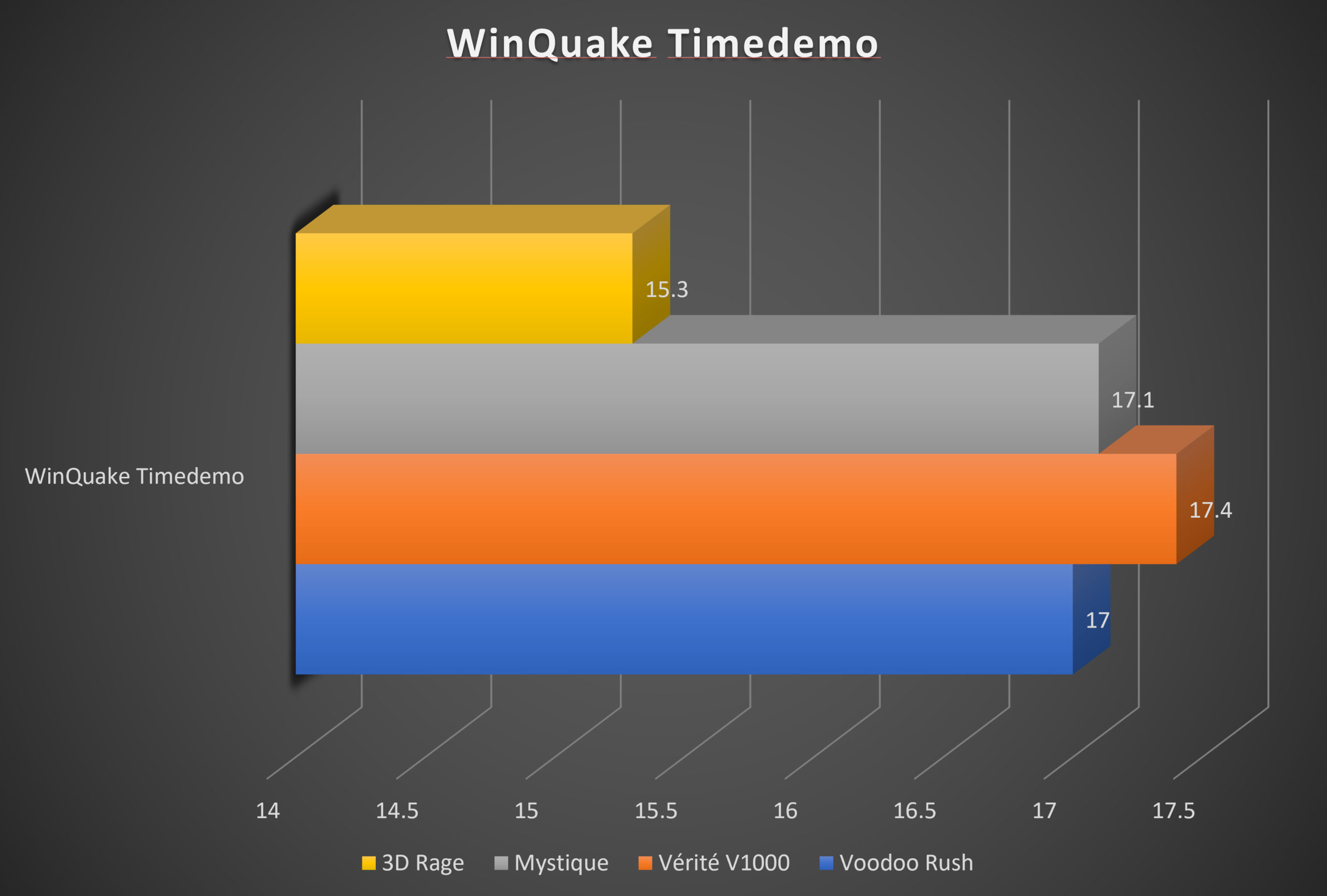This is the second part of the 3dfx Voodoo cards review series. This time it’s all about the infamous Voodoo Rush. After the Voodoo Graphics became an instant legend, 3dfx had decided to milk its success a little bit. The Voodoo Rush came out in the mid of 1997 which is roughly a year after the release of the Voodoo Graphics. While the Voodoo Graphics cost $300, the Rush was priced a bit differently, it ranged from $200 up to $250. Most expensive of the bunch was Hercules Stingray, which is the one I’ve got right here.
The original Voodoo Graphics was a 3D accelerator only card and as such it needed an additional 2D card to work. This solution was unnecessarily more expensive for gamers and took up two PCI slots instead of one. And thus, the Voodoo Rush was conceived. 3dfx had plans to use their 2D/3D combo Rampage chipset which was under development, but unfortunately, it wouldn’t be ready at the time of the release, so the Rush ended up with the old Voodoo Graphics chipset. In the end it was a combination of the Voodoo Graphics and a 2D chipset, so you didn’t need an additional card for it to work, but the 2D and the 3D bits of the card used separate chips. It was sort of desperate move on the 3dfx’s part, and even though its reputation is far cry from good, I still wonder how good the card actually was.
There were basically two versions, one with the Alliance AT25 chip and one with the Macronix chip which was called MX and some numbers. Most of the cards had 6MB of RAM, 2MB for textures and 4MB for frame buffer, later that year appeared couple of cards with additional 2MB for textures, not too many though.
Companies like Rendition or Permedia were pretty successful with their 2D/3D combo cards, however 3dfx’s approach to this setup introduced some problems. The card’s memory was shared between the 2D and the 3D bit of the card, that fact alone wouldn’t be much of a problem, the problem was that frequencies across the components didn’t match. The Voodoo bit was running at 50MHz, the memory was running also at 50MHz, but the 2D chips were running at much higher speeds and the memory slowed them down and caused some artefacts in the graphics. Macronix chip ran at 75MHz and the Alliance chip ran at 72MHz and that paired with poor memory organisation in the frame buffer caused quite CPU overhead. I’m not sure if it added to the crappiness of the card, but RAMDACs were not brilliant either. Macronics uses 160MHz RAMDAC, while Alliance, even though a bit better, uses 175MHz. I’ve got both of them, because I wanted to pit them against each other, but when I was testing the Macronix card, it just stopped working all of a sudden, so the review is going to be all about the Alliance chipset.
The Voodoo Rush is said to be a lot slower than the original Voodoo Graphics, I’ve never owned it in the past, so I don’t know if that’s true or not, yet. I’ll pit the Voodoo Rush against the Voodoo Graphics and its 2D chip against some of the cards of that time. I’ll finally know for sure if it really was that bad or not, if it was, it would explain its horrendous sales and why it disappeared very quickly from the market. I tried all sorts of drivers, but the best appeared drivers from Hercules, so I kept using those. As a testing rig I used Pentium 200MHz with 128MB of RAM and this is how it performed.
2D DOS performance
Well, to be honest, I expected that to be much worse, it doesn’t excel in any of the tests or games, but it’s not utter rubbish either. I’ve ran several tests and it did quite alright. It’s surprisingly good for a card that everybody’s trashing. Every game ran without problems and benchmarks sort of support that. Too bad the Macronix card’s not working, it’d be cracking to test them both.
3D DOS performance
As I was pleasantly surprised by the 2D performance, 3D was simply rubbish. Most of the DOS games didn’t work at all, if they did work, they crashed pretty much right away, if they didn’t crash right away and I got in the game menu, they crashed after a while and only handful of games were actually playable. I tried lots of different patches, but none of them helped at all. And when I finally got at least some games working, the Rush was a lot slower, than the original Voodoo Graphics.
2D Windows 9x performance
This was another surprise. Benchmarks like Final Reality put the Rush on par with pretty much all cards I’ve tested. It didn’t blow them all out of the water, but the performance was formidable. The same goes for WinQuake, the difference in performance was quite indistinguishable.
What I didn’t expect was the Rush crushing every other card in Unreal using software drivers, it was that fast. Well, I wouldn’t call 8 fps lightning fast, but it was about 40% faster, than any other 2D card on the market at that time. But nobody wanted to play Unreal or any other game for that matter, using software rendering.
3D Windows 9x performance
What everybody actually wanted in 1997 was a Voodoo card for playing latest 3D games under Windows. And that’s where the Voodoo Rush doesn’t come in. If you reckon the Rush’s 3D performance under Windows was much better than under DOS, well, guess again. It’s so bad, you have to see it side by side with the Voodoo Graphics and Rendition V1000 to fully appreciate the crappiness of the Voodoo Rush. Moreover, I sort of struggled to get some games such as Unreal working. It kept crashing and locking up my rig over and over. I tried reinstalling the bloody game, I tried different patches, combined with different drivers, it was tiring. When I finally got it working and got in the game, I couldn’t set the resolution to 640×480, because it was crashing again. And finally, when the bloody game started working properly, it was so slow, I couldn’t believe it’s a Voodoo card.
The Voodoo chipset, of course, utilises Glide API in games that support it, however, when the game doesn’t support Glide and needs to use Direct3D, the Alliance or Macronix chips come into play. Is it bad you’re asking? It is bad, but it’s not utterly worthless as people usually say. Interestingly, it’s as fast as the NEC’s PowerVR, but as fast as whatever it may be, who in their right mind would want a 3dfx card that doesn’t use its Voodoo chip for games? Nobody, that’s who. I wonder what went through 3dfx engineers’ heads when they were designing this card. Were they watching Aliens or wanking off to 90’ calendars? I don’t know, but this is the outcome.
Picture quality
And that brings me to the image quality. Since the Voodoo Rush uses the same chipset as the original Voodoo Graphics they should look pretty much the same. Watch the video and you be the judge.
Conclusion
3dfx made a terrible mistake by releasing this graphics card, maybe it was a bit rushed. 2D performance was quite good, in some cases even excellent, but nobody cared about 2D performance anymore, all new games were all about 3D. And the 3D is where the Voodoo Rush didn’t shine. Under the 3dfx’s Glide API, games were about 20% or 30% slower than with the original Voodoo Graphics. And if the game didn’t support Glide API and ran only under Direct3D, it didn’t use the Voodoo chip and the performance was even worse, about 60% down compared to the Voodoo Graphics. Now, is it worth having this piece of hardware in your vintage computer? Definitely not! It’s as useless as it was when it first came out. It’s bloody expensive to get even today and the only reason to get it, is for your VGA collection.
